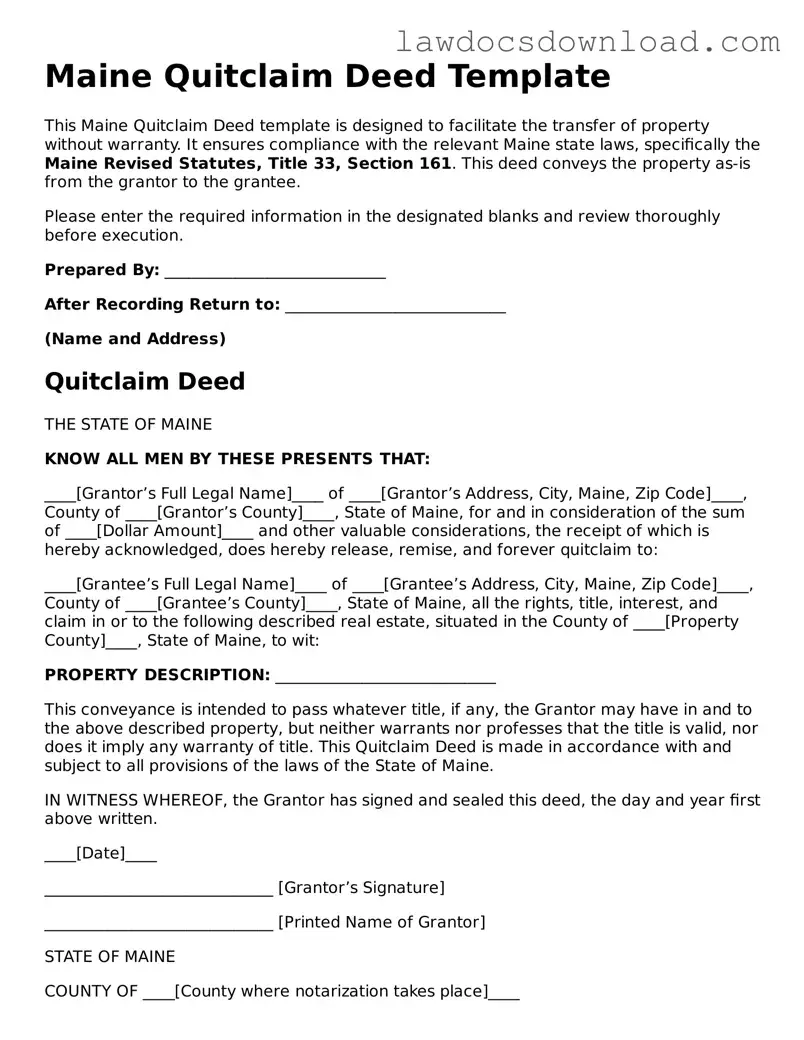Maine Quitclaim Deed Template
This Maine Quitclaim Deed template is designed to facilitate the transfer of property without warranty. It ensures compliance with the relevant Maine state laws, specifically the Maine Revised Statutes, Title 33, Section 161. This deed conveys the property as-is from the grantor to the grantee.
Please enter the required information in the designated blanks and review thoroughly before execution.
Prepared By: ____________________________
After Recording Return to: ____________________________
(Name and Address)
Quitclaim Deed
THE STATE OF MAINE
KNOW ALL MEN BY THESE PRESENTS THAT:
____[Grantor’s Full Legal Name]____ of ____[Grantor’s Address, City, Maine, Zip Code]____, County of ____[Grantor’s County]____, State of Maine, for and in consideration of the sum of ____[Dollar Amount]____ and other valuable considerations, the receipt of which is hereby acknowledged, does hereby release, remise, and forever quitclaim to:
____[Grantee’s Full Legal Name]____ of ____[Grantee’s Address, City, Maine, Zip Code]____, County of ____[Grantee’s County]____, State of Maine, all the rights, title, interest, and claim in or to the following described real estate, situated in the County of ____[Property County]____, State of Maine, to wit:
PROPERTY DESCRIPTION: ____________________________
This conveyance is intended to pass whatever title, if any, the Grantor may have in and to the above described property, but neither warrants nor professes that the title is valid, nor does it imply any warranty of title. This Quitclaim Deed is made in accordance with and subject to all provisions of the laws of the State of Maine.
IN WITNESS WHEREOF, the Grantor has signed and sealed this deed, the day and year first above written.
____[Date]____
_____________________________ [Grantor’s Signature]
_____________________________ [Printed Name of Grantor]
STATE OF MAINE
COUNTY OF ____[County where notarization takes place]____
On this ____[day]____ day of ____[month]____, ____[year]____, before me, the undersigned notary public, personally appeared ____[Name(s) of Grantor(s)]____, known to me (or satisfactorily proven) to be the person(s) whose name(s) is/are subscribed to the within instrument and acknowledged that he/she/they executed the same for the purposes therein contained.
IN WITNESS WHEREOF, I hereunto set my hand and official seal.
_____________________________ [Notary Public’s Signature]
_____________________________ [Printed Name of Notary Public]
My Commission Expires: ____[Expiration Date]____
